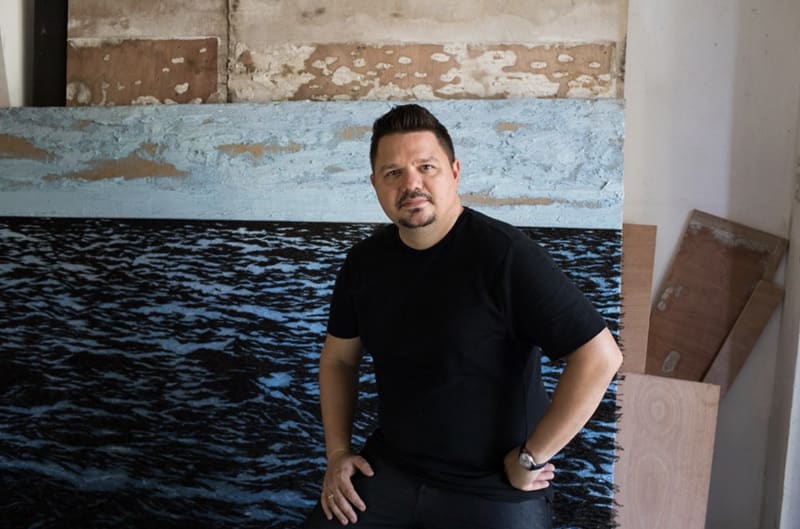A few days into a cigar-tasting trip to Cuba, the urge to explore the local art scene took over, and I remembered a character I had met in New York at an opening at Acquavella Gallery. Hemingway could not have invented him: a Havana-based Spanish adventurer occupied with “recovering national heritage” from the sea, and a major patron of the Cuban art scene.
I was soon discovering fascinating work in a sprawling mansion in the middle of Havana. Besides the colourful erotic paintings by and of his artist wife which adorned the sweeping central staircase, one work caught my eye: a set of forged steel bars of the sort that protect the windows of Cuban houses. Four of the bars had been shaped to create profiles of faces, at once human and yet faceless in their inhumanity—a portrait of today’s surveillance culture and the intrusion of the state—any state—into the private life of the individual. Paranoia was my first encounter with the work of Yoan Capote, and it was love at first sight.
A meeting was quickly arranged. Capote’s studio struck me as very orderly, efficient and well arranged. Although his work comments on the political situation in Cuba, this is far from being “underground”. Much of his oeuvre addresses oppression, and the restrictions on the freedoms of speech and movement. Even his seascapes describe a sinister reality, fashioned from fish hooks hand-sewn onto the canvas—medium and subject combining as a metaphor for the island as prison with the hostile ocean as its perimeter fence.
One work is more powerful than anything I had seen since Ai Weiwei’s Sunflower Seeds. Entitled Stress, it was created over seven years, during which Capote collected 6,000 human teeth from dentists, hospitals, archaeological sites, his friends and his own mouth. These were arranged to suggest an aerial view of a large crowd, on which rocked a shaped concrete block weighing 500kg. As well as the visual and kinetic impact of the work, it was accompanied by an aural dimension: the sounds of thousands of human teeth grinding, as if afflicted by a mass outbreak of bruxism.
Despite Capote’s increasing international success, he remains adamant on keeping his base in Havana. “My works are the result of a constant intent for translating into a physical experience our psychological or inner conflicts,” he says. “Art for me is a form of psychological analysis and a guarantee of sanity.” It is perhaps the challenging conditions and paradoxes of life in Cuba that lead not to despair but instead to the expansion of his being and his artistic practice.
Yoan Capote’s work is currently on show at the Gwangju Biennale, South Korea.
Full article at Vanity Fair

